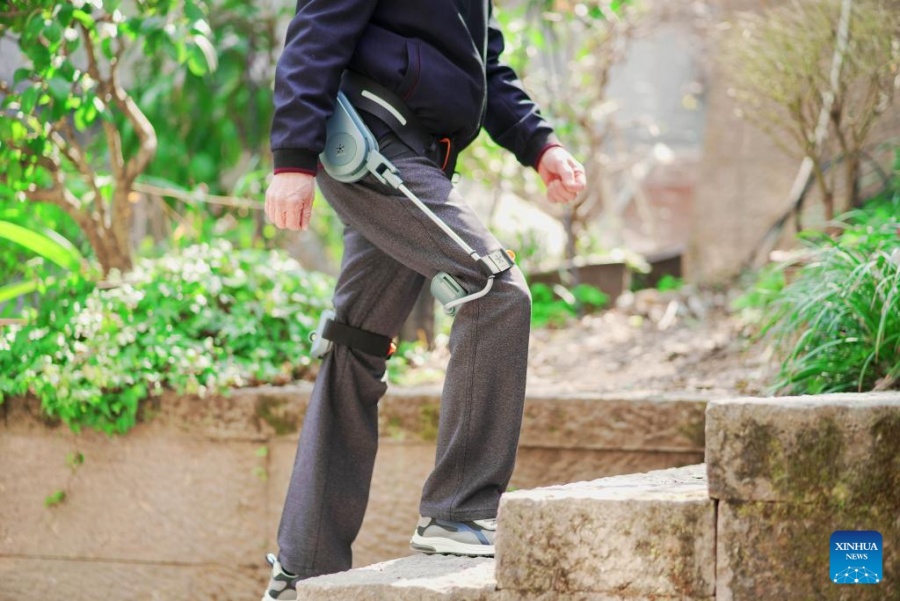
- Home
- Media Center
-
Events
- Wuzhen Summit
- Regional Forums
- Practice Cases of Jointly Building a Community with a Shared Future in Cyberspace
- World Internet Conference Awards for Pioneering Science and Technology
- The Light of Internet Expo
- Straight to Wuzhen Competition
- Global Youth Leadership Program
- WIC Distinguished Contribution Award
- Membership
- Research & Cooperation
- Digital Academy
-
Reports
- Collection of cases on Jointly Building a Community with a Shared Future in Cyberspace
- Collection of Shortlisted Achievements of World Internet Conference Awards for Pioneering Science and Technology
- Reports on Artificial Intelligence
- Reports on Cross—Border E—Commerce
- Reports on Data
- Outcomes of Think Tank Cooperation Program
- Series on Sovereignty in Cyberspace Theory and Practice
- Other Achievements
- About WIC
- 中文 | EN

Cyborg-like walking assistance device targets China's expanding elderly market

A senior citizen wearing an exoskeleton walking aid device climbs the stairs in Hangzhou, East China's Zhejiang province, Feb 24, 2025. [Photo/Xinhua]
Inspired by tendon mechanics, the battery-free device, which weighs 2 kg, is worn around the hips and above the knees, capturing and storing some of the energy generated by the body's own efforts, before releasing it to assist with walking.
"Exoskeleton robotics support seniors with weaker muscles, enhancing mobility through force compression and release, rotation speed and angle adjustments," said Yan. Even physically fit young people can get 30 percent assistance when wearing it.
"China's exoskeleton robots, set for significant growth in the field of elderly care, have mastered key technologies like ergonomic design, motion recognition and self-learning AI that dynamically refine movement patterns," said Chen Zhiran, director of the Digital Economy Research Office at Zhejiang Development and Planning Institute.
China's increasing elderly population faces widening unmet mobility needs, resulting in overburdened rehabilitation therapists and an annual shortfall in terms of rehab therapy graduates.
Latest data shows that by the end of 2024, China's population aged 60 and above had reached 310 million -- accounting for roughly 22 percent of its total population.

The World Internet Conference (WIC) was established as an international organization on July 12, 2022, headquartered in Beijing, China. It was jointly initiated by Global System for Mobile Communication Association (GSMA), National Computer Network Emergency Response Technical Team/Coordination Center of China (CNCERT), China Internet Network Information Center (CNNIC), Alibaba Group, Tencent, and Zhijiang Lab.





